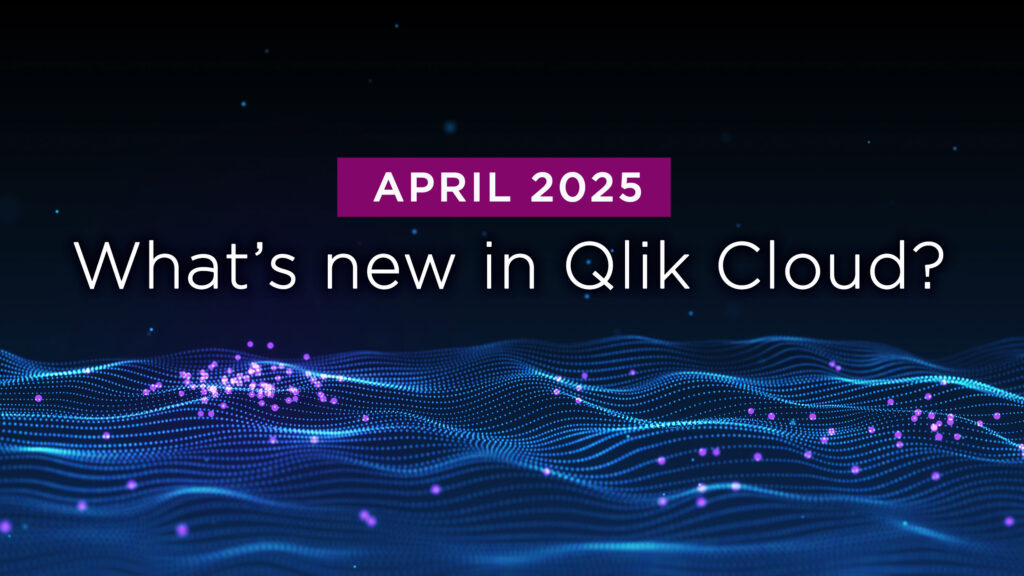
The way organisations use data is changing – How do you build a modern data architecture to align with it?
Author: Bas Haarhuis, Sales Manager at Climber.
The way organisations use data has evolved significantly in recent years. What began with static reporting has transformed into a dynamic process where data plays a central role in decision-making and innovation.
The need for modern data architecture is driven by several key trends:
Key trends driving changes in data architecture include:
- AI-driven Analytics: Artificial intelligence is applied to uncover new insights from complex data, such as text, images, and videos. These techniques make analyses smarter and more advanced than traditional methods.
- Edge Analytics: Sensors and devices generate increasing amounts of data. By performing analytics directly at the source, valuable time is saved, enabling real-time decision-making.
- Self-service BI: Modern tools like Qlik Sense, Power BI, and Tableau empower business users to develop dashboards and reports independently, allowing organisations to act faster.
- Embedded BI: Key Performance Indicators (KPIs) are seamlessly integrated into operational applications, providing users with direct access to relevant data during their daily workflows.
- Data analysis for external parties: Suppliers and customers are granted controlled access to specific datasets, enabling them to perform independent analyses and fostering better collaboration.
- Data Science: Using advanced techniques like machine learning, organisations discover unknown patterns and trends in their data, leading to new business opportunities and operational improvements.
These trends are changing the way we handle data and the requirements we place on it. A modern data architecture can help organisations manage complex data flows, leverage new technologies, and gain a competitive edge. But how do you build a modern data architecture?
Key Considerations for designing a Modern Data Architecture
There is no one-size-fits-all solution for data architecture. If you have determined that your current architecture is no longer sufficient and want to transition to a modern approach, there are several critical factors to consider. These factors are essential for building an architecture that meets both current and future data needs.
Key considerations include:
1. Data requirements and diversity
Determine what information your organisation needs and from which sources or applications this data must come. What types of data (structured or unstructured) are involved, and how large are the datasets? As organisations rely on an increasing number of applications, it is crucial that the architecture can easily integrate new data sources and grow alongside the organisation.
2. Performance requirements
What performance level does your data integration processes require? For some applications, batch processing is sufficient (e.g., financial reports), while others require real-time data (e.g., demand-supply matching or online sales optimisation). Real-time data is becoming increasingly important for fast and accurate decision-making but requires specific technologies and storage structures.
3. Security, compliance, and governance
Every organisation must comply with regulations like GDPR. The extent to which you offer self-service BI, for example, impacts how access control is structured. Additionally, certain sectors, such as healthcare or government, face stricter regulations. These factors influence how governance and security are implemented within your data architecture and where data is stored.
4. Team composition
The choice between in-house or outsourced solutions and the technologies used depends on the competencies and capacity within your data team. Script-based technologies may be more complex to implement and maintain compared to modern cloud-based tools. Ensure your team has a good balance of data engineers, architects, and analysts.
5. Budget considerations
Finding a balance between performance requirements and available resources is crucial. Real-time data processes offer significant advantages but are generally more expensive than batch processing. It is essential to clearly define organisational priorities and manage expectations accordingly.
Key Components of Modern Data Architecture
Identifying the above factors helps in designing the following architecture components:
- Data storage structure: For raw, standardised, integrated, and consumable data.
- Data storage methods: Choose between cloud, hybrid, or on-premises solutions, depending on performance and storage requirements.
- Governance and security: Access control, encryption, and compliance with regulations.
- Self-service capabilities: With analytics tools like Qlik Sense and Power BI.
Finally, a solution is needed to orchestrate, manage, and automate processes within your modern data architecture. This brings us to data integration tooling.
Data Integration as the core of the Architecture
Data integration is the heart of modern data architecture. It brings data together from various sources, transforms it, ensures quality, and makes it available in the correct format for analysis and AI applications. Modern tools make it possible to automate these integration processes and enable both real-time and batch-oriented data streams to coexist.
Stay tuned for our next blog, where we will dive deeper into data integration, exploring challenges, pain points, and benefits. Interested in practical examples or hands-on experience? Sign up for our webinars coming in March and April!

WANT TO KNOW MORE? CONTACT US!
Bas Haarhuis
Sales Manager
bas.haarhuis@climber.nl
+31 6 39 46 39 65
Stef Comello
Managing Director
stef.comello@climber.nl
+31 6 81 78 98 97
Nieuws

People and Data Literacy in the age of AI
Welcome to join our webinar on 7th May to learn how to strengthen data literacy within your organisation and build a culture where data and AI support people’s expertise — instead of replacing it.
>> Register now
What’s New in Qlik Cloud – Apr 2025
Qlik continues to roll out a comprehensive set of updates across the platform – from workflow automation, machine learning improvements, charting enhancements, new scripting tools, and expanded global coverage.
>> Read more
The Data Literacy Imperative – Why your business can’t afford to ignore it
A recent Gartner report ranks poor data literacy among the top five barriers to the success of data and analytics initiatives. Discover strategies to bridge the data literacy gap and empower your team to make informed, data-driven decisions.
>> Read more
